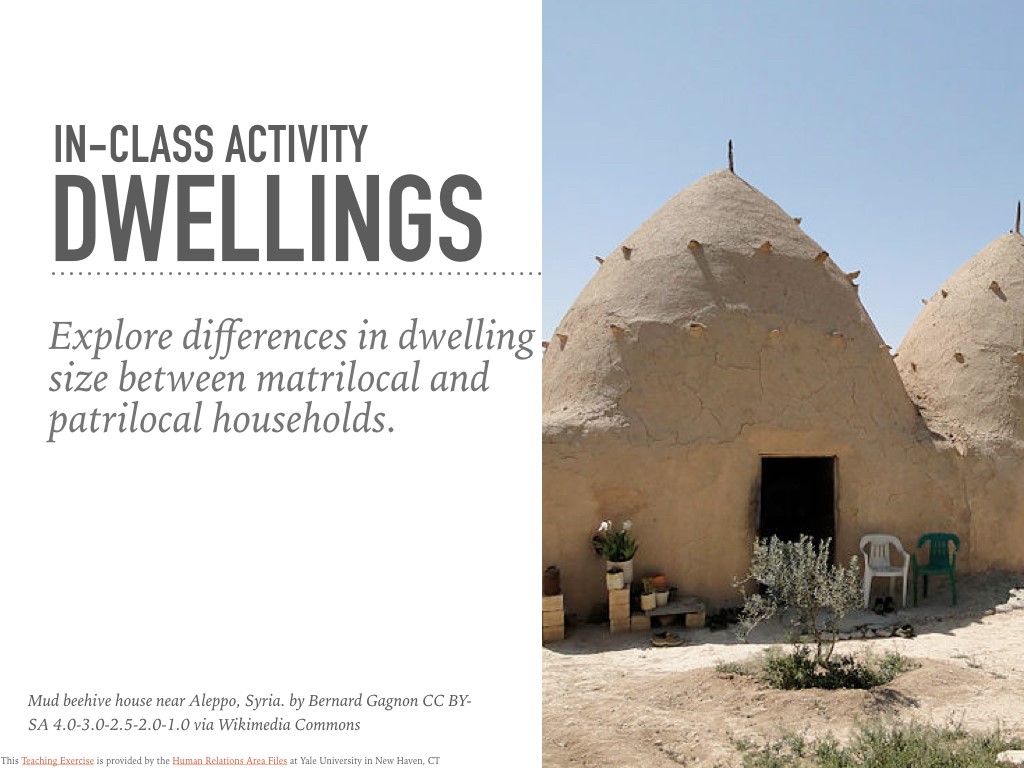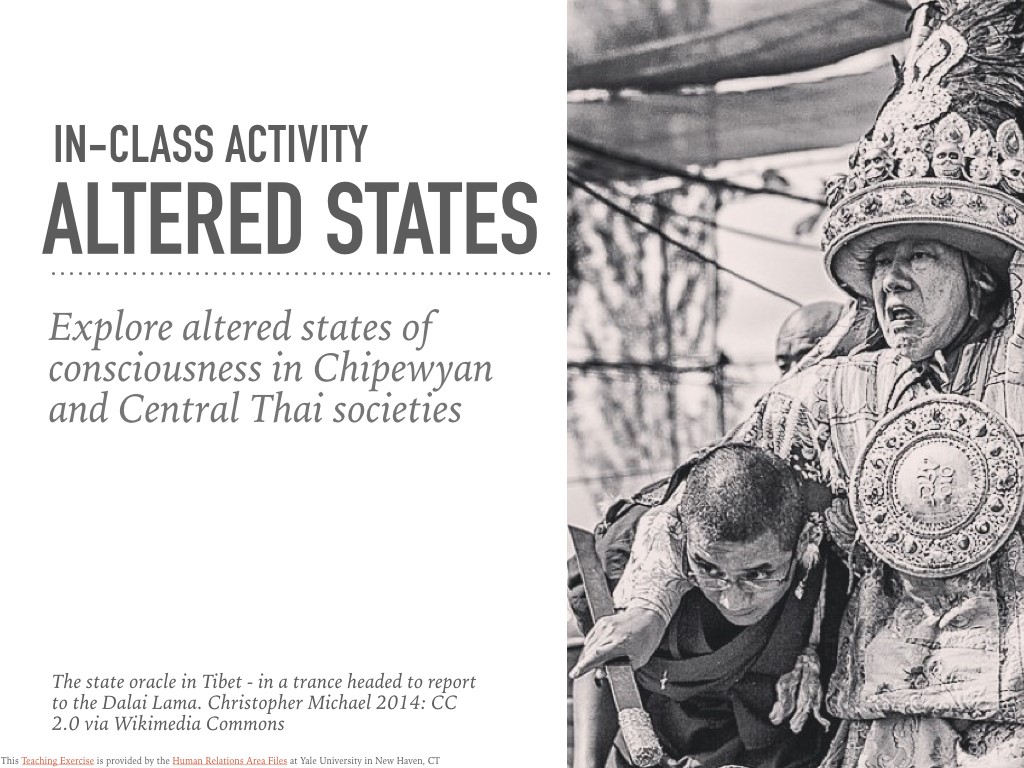
This is the second in a series of posts from HRAF aimed at assisting instructors in transitioning to online teaching since the COVID-19 pandemic, a global event that has resulted in temporary university closures due to self-isolation and quarantine procedures. The previous post provided a comprehensive overview of HRAF products and services that are available to instructors, students, and researchers, including our membership-based eHRAF Databases and open access resources. It featured several teaching syllabi from our open repository, Teaching eHRAF. This post will expand on classroom applications for teaching and learning with eHRAF, featuring our In-Class Activities, as well as where to find online help and tutorials.
Update 4/29/2020: Looking for online anthropology teaching materials? Our new course, Ethnographic Insights Across Cultures, is a wholly digital syllabus for your remote classroom.
In-Class Activities
Teaching eHRAF, our open-access repository of sample syllabi and teaching materials, contains nearly 60 example exercises, with more being added regularly. If you are new to Teaching eHRAF or the eHRAF Databases, you may wish to refer to this mini-guide from our remote learning post that describes how instructors might use portions of ethnographic text found in eHRAF World Cultures to formulate a quick classroom assignment suitable for online education.
Among the 60 exercises presently included in Teaching eHRAF are 10 exercises labeled as “In-Class Activities”. In-Class Activities were developed in-house by HRAF, adapted from our original sample syllabi on anthropological themes which we have found to be especially popular search topics within eHRAF World Cultures or Archaeology, such as Marriage, Sexuality, Ethnobotany, Altered States of Consciousness, or Hunter-Gatherers. These 10 exercises, shown below, can also be browsed by checking the box for In-Class Activities using the filter at the top of the page in Teaching eHRAF.
Each In-Class Activity includes a coursework assignment, typically comprised of questions that can be answered during class time or as an independent learning assignment. For instructors, the activities come with a guideline for how long the tasks should take – usually between 15 and 45 minutes total – as well as a suggested assessment rubric. Student learning outcomes and guidance for searching and comparing cultural data in eHRAF are provided for each activity. A PDF or PowerPoint version can be downloaded by instructors to easily plug the assignment into their preferred method of course instruction or online file management system. If instructors find that adjustments need to be made to the content of the questions or search queries, the PowerPoint version of the exercise can be edited as needed.
To make the most of these activities, access to the eHRAF databases for your university is preferable, so that all participants in the “digital classroom” can have 24/7 off-campus access to eHRAF in its entirety. Some activity questions are based on eHRAF Culture Summaries, which do not require a login, but the majority benefit from complete access to the databases. If your institution is not yet a member, we are currently offering extended free trials as part of our response to the COVID-19 pandemic, which can be arranged through your university or college library. Search the tables on this page to determine if your institution is already a member, otherwise apply for a free trial here. Membership through your university library will enable full access for all students and faculty – including off-campus – via your usual library portal, VPN, or proxy.
Because the In-Class Activities in Teaching eHRAF are brief, visually appealing, and available in easy-to-share or display formats (HTML, PDF and PowerPoint), they are ideally suited to remote learning. As an open-access resource, instructors may download and share the exercises freely, including uploading them to Learning Management Systems (LMS) or teaching platforms such as Blackboard, Moodle, or Canvas. With off-campus access to eHRAF from anywhere, students can complete tasks in their own time, or in real time during remote instruction, such as via video conferencing platforms like Zoom or WebEx.
? For assignments focusing on cross-cultural research methods, you may also review our free open-access guided learning course, Introduction to Cross-Cultural Research. In addition, some of the topical summaries in our other open-access database, Explaining Human Culture, intersect with subjects covered in the In-Class Activities, making them perfect study companions. Learn more here.
Additional help and resources from HRAF
 If you would like to use our Teaching eHRAF exercises including In-Class Activities in your (virtual) classroom assignments, you may wish to provide tutorials or guides for your students to learn how best to search and browse within eHRAF. We have plenty of tutorials readily available to cover all steps of researching with eHRAF, from basic to advanced search, and everything in between. You can find all of our eHRAF World Cultures and eHRAF Archaeology video tutorials on this page, or on our YouTube channel.
If you would like to use our Teaching eHRAF exercises including In-Class Activities in your (virtual) classroom assignments, you may wish to provide tutorials or guides for your students to learn how best to search and browse within eHRAF. We have plenty of tutorials readily available to cover all steps of researching with eHRAF, from basic to advanced search, and everything in between. You can find all of our eHRAF World Cultures and eHRAF Archaeology video tutorials on this page, or on our YouTube channel.
A comprehensive, text-based web version of the eHRAF User Guide is available via the help link in the eHRAF interface. Alternatively, you can access it directly here. We recommend offering both video and text guides to students for accessibility purposes. Further information that might be useful for instructors can be found on our Help & Support page as well as under Reference Materials. Should you require more customized help with any aspect of Teaching eHRAF, including the process of adapting offline course materials for the pivot to online classes, feel free to arrange a personalized webinar with us.
Contributing to Teaching eHRAF
HRAF welcomes contributions from any and all instructors utilizing the eHRAF Databases for teaching. Whether you are developing a syllabus for introductory anthropology or archaeology at a community college, or teaching cross-cultural research methods in a related discipline such as psychology or sociology, please feel free to get in touch and let us know how eHRAF is working for you at this time. Are you producing digital anthropology syllabi for online courses during the COVID-19 quarantine? We may be able to include your classroom exercises or custom eHRAF guides in Teaching eHRAF, or feature your student activities on our homepage.
The following is an example of an introductory eHRAF Tutorial Video produced by one of our members, Dr. Ann Feuerbach of SUNY Nassau Community College, for use in her anthropology classes:
If you have any type of teaching materials that you wish to share with us for inclusion in Teaching eHRAF, please email Dr. Francine Barone (francine.barone@yale.edu), or get in touch with us via social media. You can find us on Facebook, Twitter and Instagram.
Go to Part 1: HRAF and the transition to remote education: Online anthropology amid #CovidCampus
Go to Part 3: Remote futures: tips for online teaching and learning in anthropology









